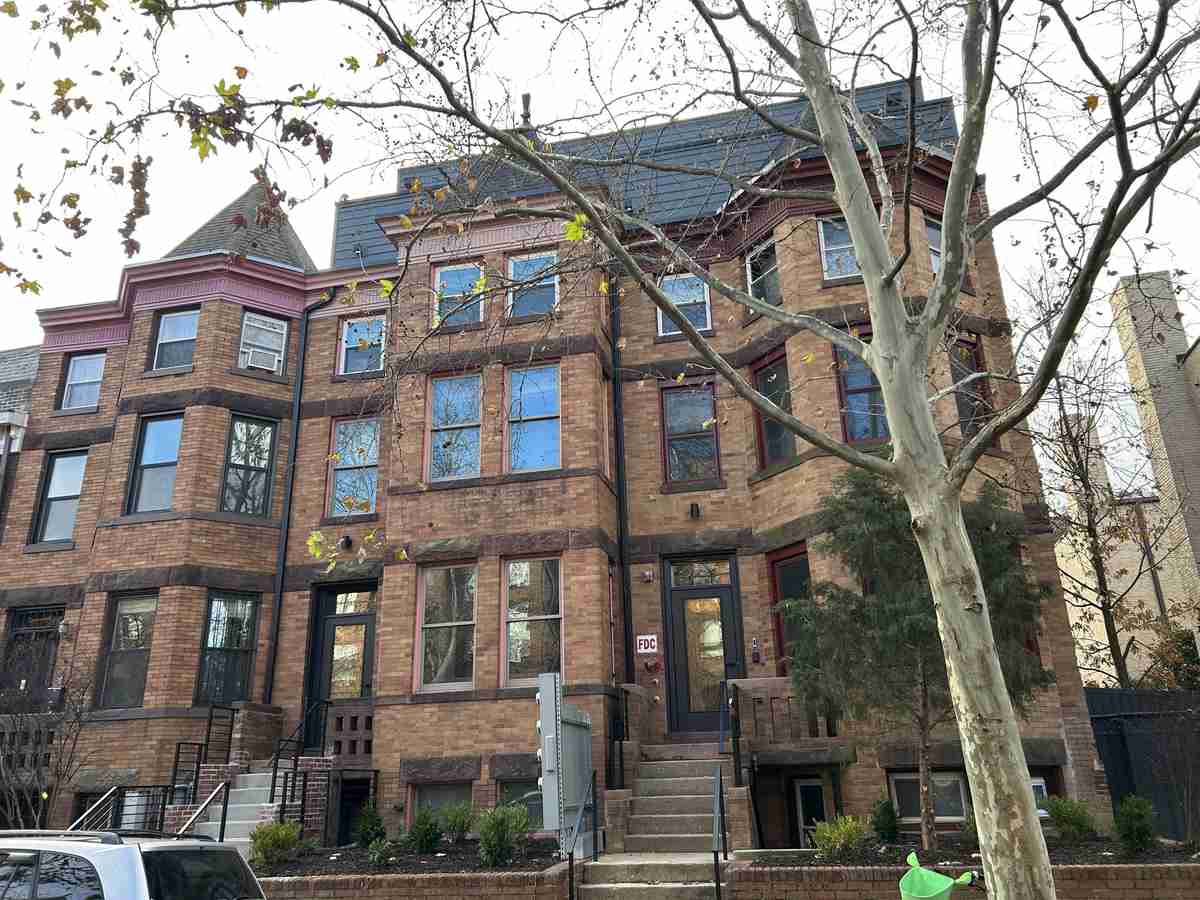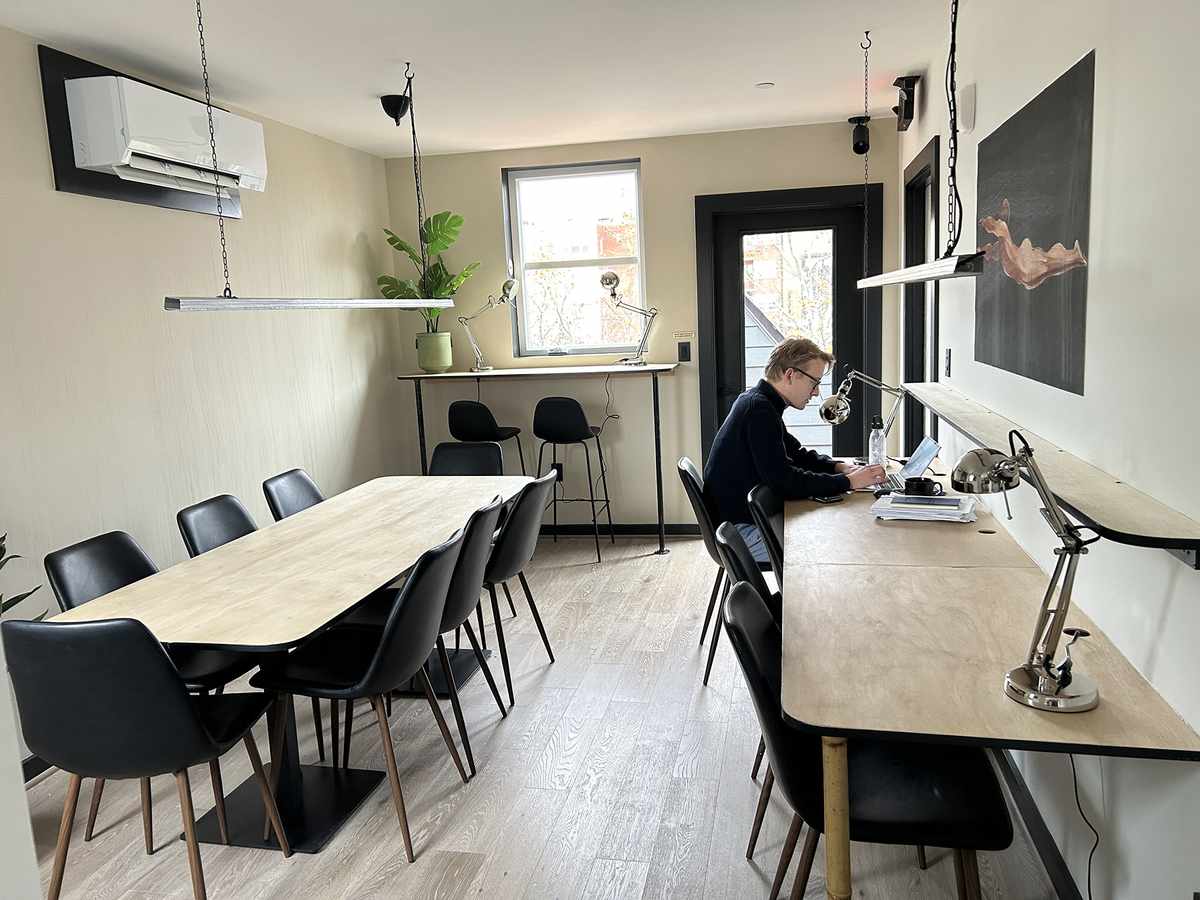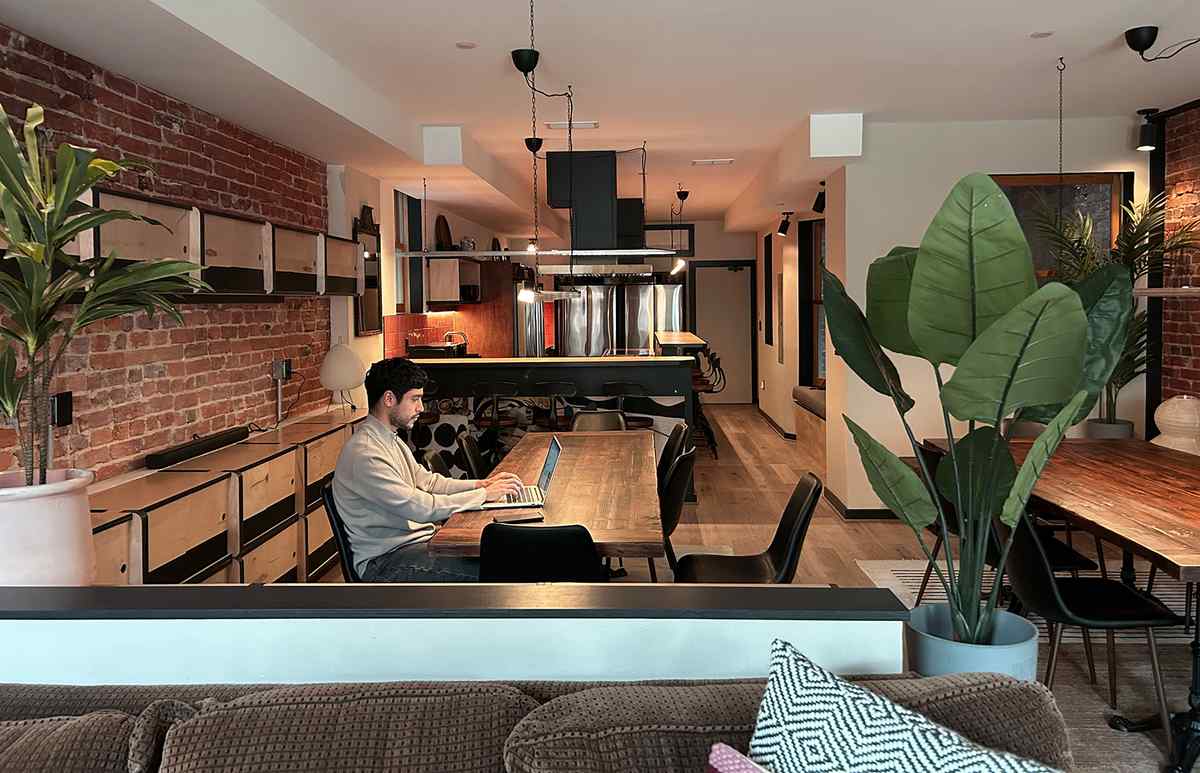
Two adjacent rowhouses on Chapin Street NW were combined and renovated to form the first Cohabs building in D.C.
16:03 JST, January 8, 2025
Washingtonians are likelier to live alone than residents of any other major U.S. city, according to a recent study – a recipe for loneliness that one European company sees as a business opportunity.
Brussels-based Cohabs is buying up properties in D.C. with the aim of converting them into “co-living” spaces, where as many as 36 housemates will share common areas, events and – according to the firm’s marketing – a cure for urban loneliness.
The company opened its first D.C. house last month. The property, formerly two adjacent rowhouses in Columbia Heights, has been turned into a warren of 36 bedrooms, 15 bathrooms, two full kitchens, six kitchenettes and two roof decks.
Cohabs has purchased five other properties in D.C. and is aiming for more. In 2025, the company plans to buy a building a month, according to U.S. managing director Daniel Clark. “We could go pretty quickly to 500 beds, and I think 1,000 beds is possible,” Clark said.
An April study by the Chamber of Commerce, a real estate research company, named D.C. the loneliest city in America, based on Census Bureau data showing that 48.6 percent of households in the city consist of just one person, the highest share of any city with a population of at least 150,000. Nationwide, the study said, solo living has increased as people wait longer for marriage and children, and the covid pandemic accelerated the trend.
Cohabs’s model resembles another D.C. tradition that may or may not also cure loneliness, depending on how it works out: group house living.
Generations of mostly young D.C. transplants, facing the prohibitive cost of living alone, have fumbled their way through Craigslist searches, open houses and awkward roommate interviews before landing in shared houses with questionable hygiene and tedious chore wheels but affordable rents.
Cohabs blends that model with a dash of youth hostel, a pinch of college dorm and a layer of European-style aparthotel, where hotel-style booking is used for apartment living.
Rents are higher than in a typical group house but lower than most one-bedroom apartments in the central, lively neighborhoods Cohabs has targeted, from Logan Circle to Capitol Hill. In Columbia Heights, bedrooms that share bathrooms with one or two other residents start at 80 square feet and $1,610 per month. Rooms with private bathrooms are $2,095.
Those rents include cleaning services, utilities, periodic group breakfasts and events, a full-size bed and other furnishings, and basic communal supplies such as toilet paper, soap and olive oil.
Cohabs already operates properties across western Europe and has 17 houses in New York. The 10,952-square-foot Columbia Heights building is the company’s largest in the United States by bedroom count.
The co-living model used by Cohabs isn’t new to D.C., and it’s had its share of mishaps.
In 2016, WeWork opened its second WeLive location in Crystal City, a 216-unit apartment building with shared common areas. Five years later, following WeWork’s public implosion, the building’s management was taken over by Common Living, a New York-based co-living firm that already had eight D.C. buildings.
A 2022 Daily Beast story detailed a litany of tenant complaints at Common buildings; one D.C. resident called it a “nightmare” and “probably one of the worst experiences living somewhere I’ve ever had in my 38 years on this planet.” Last year, the German co-living company Habyt bought Common Living. In June, Habyt announced that Common was insolvent and all operations were being suspended immediately. (A 60-suite Common project at the former Walter Reed campus in Northwest Washington is now run by the apartment management firm Greystar.)
Nest DC operates eight co-living buildings in the city, with two more opening next year; another company, Oslo, has four. The i5 apartment complex at Union Market rents out co-living bedrooms alongside private apartments.
Cohabs is different, according to Clark. For one thing, the company owns its buildings rather than making management arrangements with property owners. But “what sets us apart is the community angle,” he said – the group meals, the outings to places such as climbing gyms.

Martin Beugeling, 28, works on his laptop in the co-working room at Cohabs’s first D.C. location, in Columbia Heights.
The community aspect is part of what attracted Martin Beugeling. A 28-year-old from the Netherlands, Beugeling came to D.C. to work at the Dutch Embassy and initially lived in a group house in D.C.’s Chevy Chase neighborhood. But the neighborhood was too quiet and remote for him, and he barely spent time with his roommates.
“I was looking for a place that was more social, where I could meet other people,” he said. He’d heard about Cohabs from colleagues who lived at the locations in Brussels. He reached out to the company and moved into the Columbia Heights building on opening day.
Beugeling is the archetypal Cohabs resident. More than half of residents are international, according to Clark, and most are between 25 and 35 years old. Cohabs’s leases start at three months, appealing to people who are more transient like Beugeling, who’s in town on a six-month work rotation.
Ashley Doll grew up locally, in McLean. But the 30-year-old Georgetown MBA student is looking to make a move from Arlington, and she was drawn to how easy Cohabs made it to find roommates. So on a recent morning, she toured the Columbia Heights building with D.C. operations manager Jessica Liu.
“It’s an interesting concept,” Doll said after the tour. “I feel like it’s basically like being able to find a place with roommates at a roommates price point without having to actually deal with finding roommates.” She still hasn’t made up her mind about whether to apply for a bedroom there – but if she does, it’ll be one with its own bathroom.
Clark aims to diversify the company’s housing offerings in D.C., with some properties offering larger units of up to two bedrooms. (Currently, bedrooms in the D.C. Cohabs are single occupancy, with no couples allowed, though guests are permitted.) He’s even eyeing the city’s push to convert office buildings to residential uses.

Aymen Chargui, 27, works on his laptop in one of the common spaces at Cohabs’s first D.C. location, in Columbia Heights.
For now, Beugeling’s only roommate is Aymen Chargui. The 27-year-old from France arrived in D.C. last month to work as an engineer for a French company. Friends from back home had told him that finding good housing in the United States could be tough, and Cohabs seemed like a good way to avoid a difficult housing search. Plus, he didn’t know many people here and saw an opportunity to make friends.
But until more people move in, he’s enjoying all the space – the equivalent of 18 bedrooms and a half-dozen common areas to himself.
“I don’t mind being alone,” he said.
"News Services" POPULAR ARTICLE
-

American Playwright Jeremy O. Harris Arrested in Japan on Alleged Drug Smuggling
-

Japan’s Nikkei Stock Average as JGB Yields, Yen Rise on Rate-Hike Bets
-

Japan’s Nikkei Stock Average Licks Wounds after Selloff Sparked by BOJ Hike Bets (UPDATE 1)
-

Japanese Bond Yields Zoom, Stocks Slide as Rate Hike Looms
-

Japan’s Nikkei Stock Average Buoyed by Stable Yen; SoftBank’s Slide Caps Gains (UPDATE 1)
JN ACCESS RANKING
-

Keidanren Chairman Yoshinobu Tsutsui Visits Kashiwazaki-Kariwa Nuclear Power Plant; Inspects New Emergency Safety System
-

Imports of Rare Earths from China Facing Delays, May Be Caused by Deterioration of Japan-China Relations
-

University of Tokyo Professor Discusses Japanese Economic Security in Interview Ahead of Forum
-

Japan Pulls out of Vietnam Nuclear Project, Complicating Hanoi’s Power Plans
-

Govt Aims to Expand NISA Program Lineup, Abolish Age Restriction



















